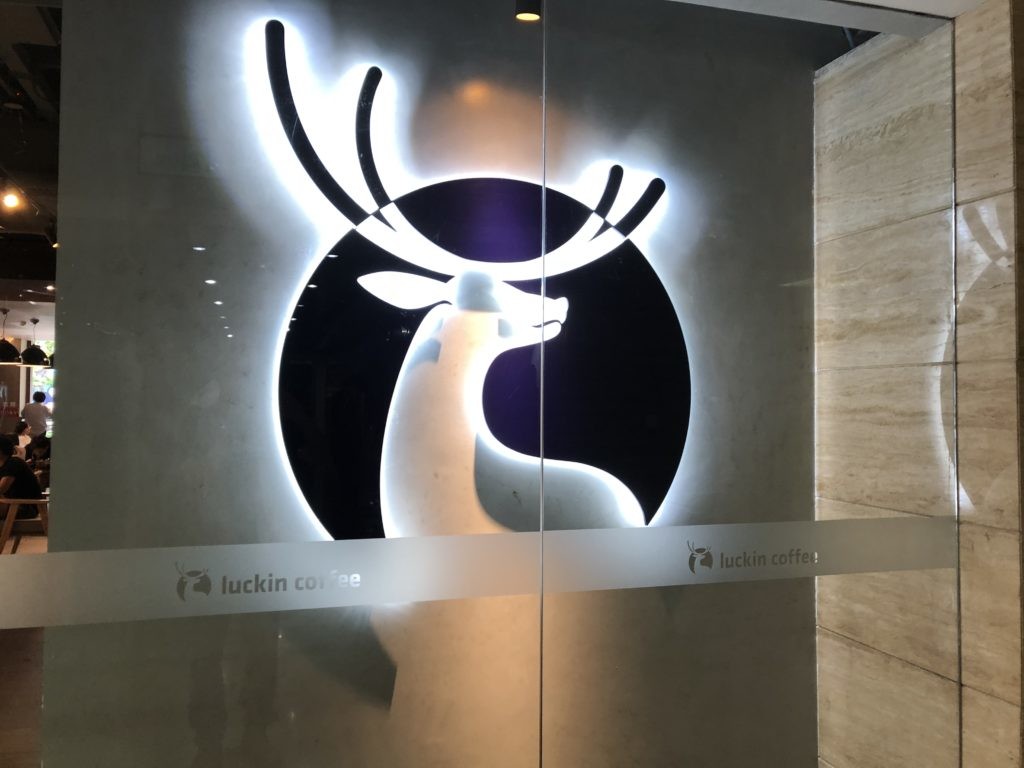Originally appeared in Linkedin written by Jeffrey Towson.
So Starbucks has launched a “new retail” strategic partnership with Alibaba. And in doing so they are leapfrogging to the front of digital and consumer China. Kudos. That’s impressive. And it’s pretty bad news for Luckin Coffee.
The Alibaba-Starbucks deal, as announced, has three components:
1) A tie-in with Ele.me for delivery.
The statement from Alibaba’s press release is: “Leveraging Ele.me’s on-demand platform to pilot delivery services in Beijing and Shanghai in September 2018; a delivery program to expand across 30 cities to more than 2,000 stores by end of 2018.”
Starbucks adding delivery is important but not a game changer. Delivery is an operational requirement for food and most other things in China today. For example, last week I ordered Luckin Coffee on my phone at Peking University and it arrived in 12 minutes.
Starbucks was behind in offering delivery so the tie-in with ele.me fills an operational gap. But you don’t win with delivery and it’s not a huge deal.
2) Integrating Starbucks into the Hema stores.
The statement in the press release is: “Partnering with Alibaba’s Hema supermarket… to create “Starbucks Delivery Kitchens” specifically designed for Starbucks delivery order fulfilment, further expanding delivery capabilities while ensuring the highest levels of the third-place in-store customer experience.”
This is more significant and will likely happen fast. Alibaba’s Hema supermarkets are now being rolled out and are new combinations of a supermarket, retail services and logistics/delivery hubs. These stores are as likely to sell fresh fruit as to cook your dinner – and to offer beauty salon services while you wait and to coordinate rapid home delivery of items ordered in the store and online. A lot of the coolest innovation happening in “new retail” is happening in these Hema supermarkets.
So putting Starbucks counters and delivery kitchens into these assets (and in the 3km delivery radius each serves) could significantly increase the Starbucks footprint for service, delivery and pick-up. This rapidly integrates Starbucks into a lot of the coolest stuff Alibaba is doing.
3) Co-Development of a virtual Starbucks store that personalizes a seamless online-offline consumer experience.
When I first heard rumours of this deal a couple weeks ago, I thought it could be mostly delivery (Point 1), which was not exciting. But I also thought there could be a game-changing scenario. One in which there is a full integration of Starbucks into the Alibaba ecosystem – accessing their customers, data and digital tools. Starbucks could become Alibaba’s key partner in pioneering “new retail” for retail coffee.
And that game-changing scenario is what this third part of the deal looks like to me.
For this, the press release said: “Co-developing an unprecedented virtual Starbucks store that will provide consumers with even more personalized and seamless digital experiences”.
Wow. That could be a game changer.
This means a full integration of online and physical assets into a unified and data-driven consumer experience for retail coffee. And it combines Starbucks big real estate footprint with Alibaba’s online ecosystem. And you can see they are going with the full “new retail” playbook by their use of the words “personalized” (that means a data network effect) and “seamless” which means they are integrating the online and physical assets.
This is the part that is really bad news for Luckin Coffee. It is one thing to compete with Starbucks in real estate. It is another to also compete with Alibaba in digital at the same time. Note: Alibaba marketing has already released several cool videos about the partnership, located here and here (hey Tom Brennan). Alibaba moves really fast.
So what should Luckin Coffee do?
Prior to this deal, I wrote an article about how Luckin can beat Starbucks – and basically laid out three approaches.
1. Copy Xiaomi: Be a cool company with a lower cost version of a luxury brand.
2. Copy Alibaba: Build and franchise a “new retail” ecosystem for coffee.
3. Partner with Alibaba or JD/Tencent: Be the retail coffee part of their ecosystem.
Starbucks has basically done Option 3 through a partnership with Alibaba. And I think Option 2 is now gone. You can’t compete with Alibaba plus Starbucks for their core customers. So that leaves Options 1 and 3 for Luckin.
1. Copy Xiaomi: Be a cool company with a lower cost version of a luxury brand.
Xiaomi entered with a product that was similar to Apple’s iPhone, but at a lower price and with some very cool marketing. They soared rapidly by bringing a lower cost version of a luxury product to a much bigger market.
This is a solid option for Luckin, because it doesn’t require Luckin to take business from Starbucks. And I think this has been their primary strategy all along.
They are offering a Starbucks-like product plus experience at a 20% lower price. And “mass market Starbucks” could work. This, however, would require that they have a lower cost structure. Xiaomi was able to do this with low-cost Chinese manufacturing.
2. They should partner with JD or Tencent ASAP.
The digital giants of China are currently fighting to build out the infrastructure of new retail. They are rapidly moving into supermarkets, department stores, convenience stores and mom-and-pop shops. And they are competing ferociously.
Now that Starbucks has partnered with Alibaba, Luckin could partner with JD/Tencent/Walmart and be their infrastructure for retail coffee. I think this is their best move by far and I would be surprised if they haven’t already had this discussion. A tie-in with WeChat alone could drive tons of traffic to their rapidly increasing number of outlets. Note: Luckin has announced they are opening 2,000 outlets this year.

